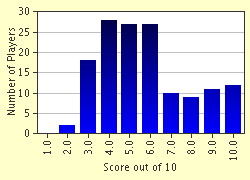Quiz Answer Key and Fun Facts
1. What is supramolecular chemistry?
Supramolecular chemistry has been defined as...
2. Who started it all off?
When asked who the forefathers of supramolecular chemistry are/were, which of these would a supramolecular chemist be very unlikely to name?
3. So what's it all about?
Supramolecular chemistry is primarily concerned with...
4. What does a supramolecule look like, anyway?
Supramolecules are very common in nature, which of the following is an example of a supramolecule?
5. Are there any things you need to consider when making a supramolecule?
Preorganisation is the term that refers to fixing or limiting the geometry of a molecule/s to assist in their binding.
6. What kind of forces are used in binding?
Van der Waal's forces are insignificant in supramolecular chemistry due to the fact that they are very weak.
7. What can a supramolecule do?
Using the appropriate supramolecular host, it is possible to bind which of these guests?
8. So what is a "suitable" host?
What type of guest would a crown ether (essentially a cyclic poly ether) be able to bind?
9. Where's this all going?
There is a lot of interest in the area of supramolecular catalysis at the moment, why is this?
10. Last one...
The 'lock-and-key' principle states that it is possible to bind any guest if the host is big enough.
Source: Author
jon_watson
This quiz was reviewed by FunTrivia editor
crisw before going online.
Any errors found in FunTrivia content are routinely corrected through our feedback system.

